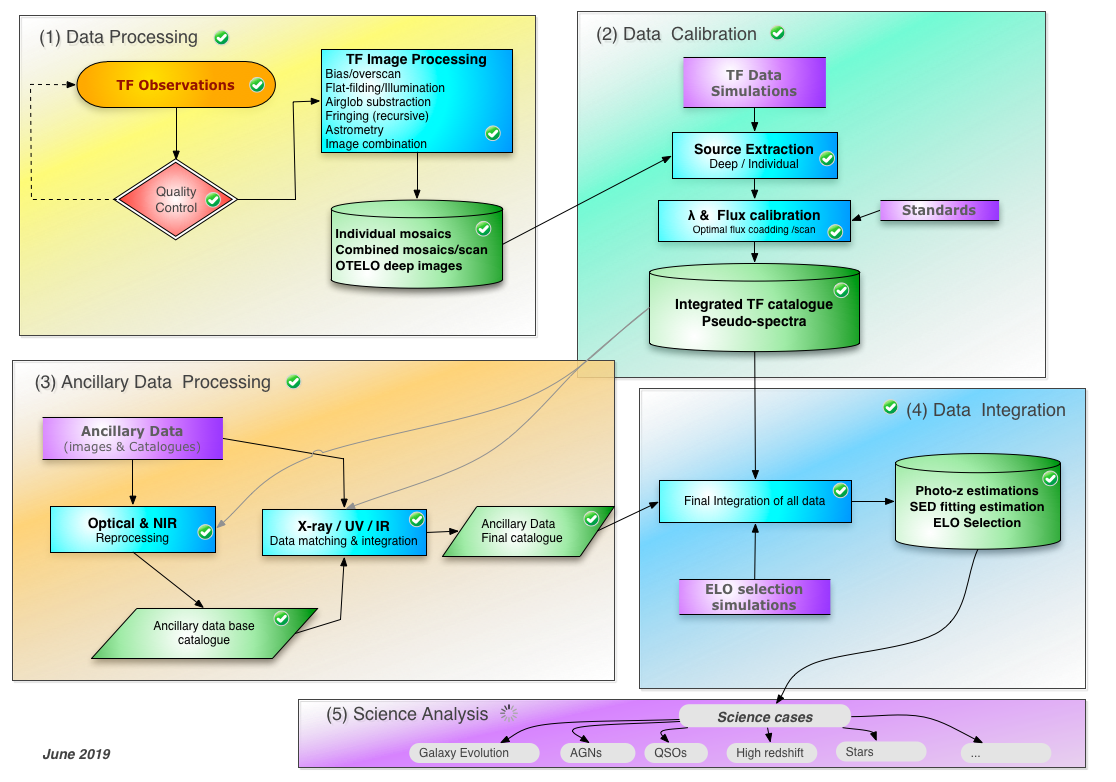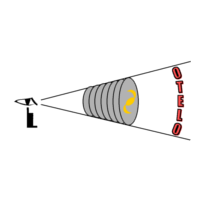Data Adquisition Overview
Deep narrow band imaging surveys require to observe different emission lines (Hα, Hβ, Oxygen, Ly-α) at different redshifts, which would imply to have a large number of filters. The Tunable Tilters (TF) at OSIRIS/GTC allows to have a large number of filters in a single device with a passband that can be narrow than the typical narrow band filters, and with the advanjes of a large Field Of View, FOV, (8.5'x 8.5'), wavelength coverage (3650-10000 Å) and telescope size (10.4m).
TF imaging allows obtaining line fluxes simultaneously for all objects within OSIRIS field-of-view, avoiding at the same time sky emission lines, and at a selected wavelength. A great advantage is the reduced contribution of sky and target continuum photon noises when narrower filters are used, and a very good continuum subtraction since off-band images are obtained very near the emission line and with the same spectral response than the on-band image.

Figure: Overview of data processing in the OTELO survey
In the case of OTELO survey we combine TF imaging (which produce a pseudo spectra) with ancillary data (which allow redshift estimates), producing a final cataloge of data to be analized by the different science teams. This process requires:
- Data adquisition and processing: a primary reduction of TF images
- Data calibration: to combine the TF images to obtain the OTELO pseudo spectra
- Ancillary Data processing: to combine the different sets of ancillary data (including reprocessing the images)
- Integration: which means obtaining redshifts from ancillary data, classify OTELO objects by its pseudo spectra to detect emission line objects, and a final integration of all thedata
This final information is then provided to the different scientific groups for a physical data analysis.
In September (2016) the final catalogues for scientific explotation were released to the different science groups.
